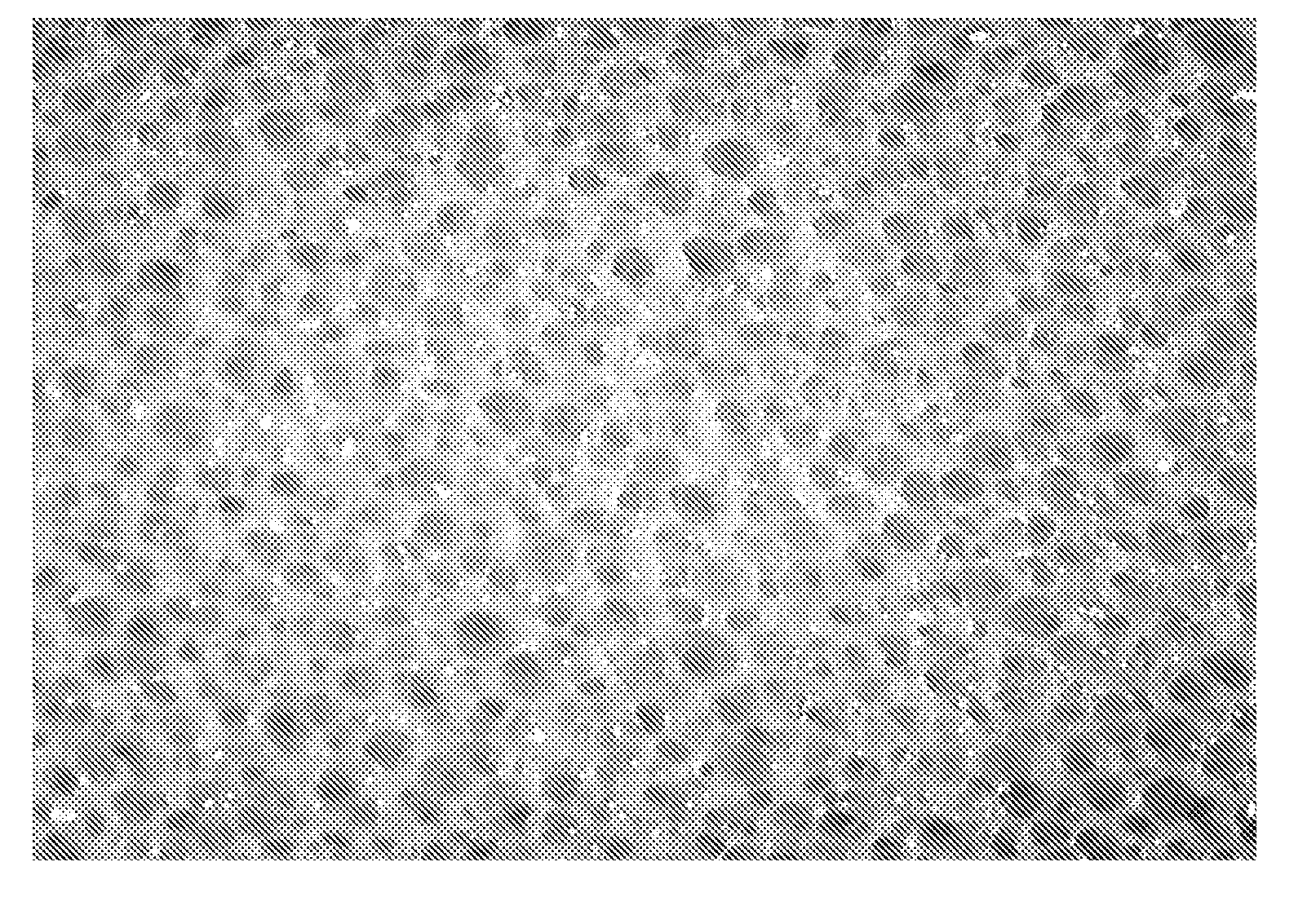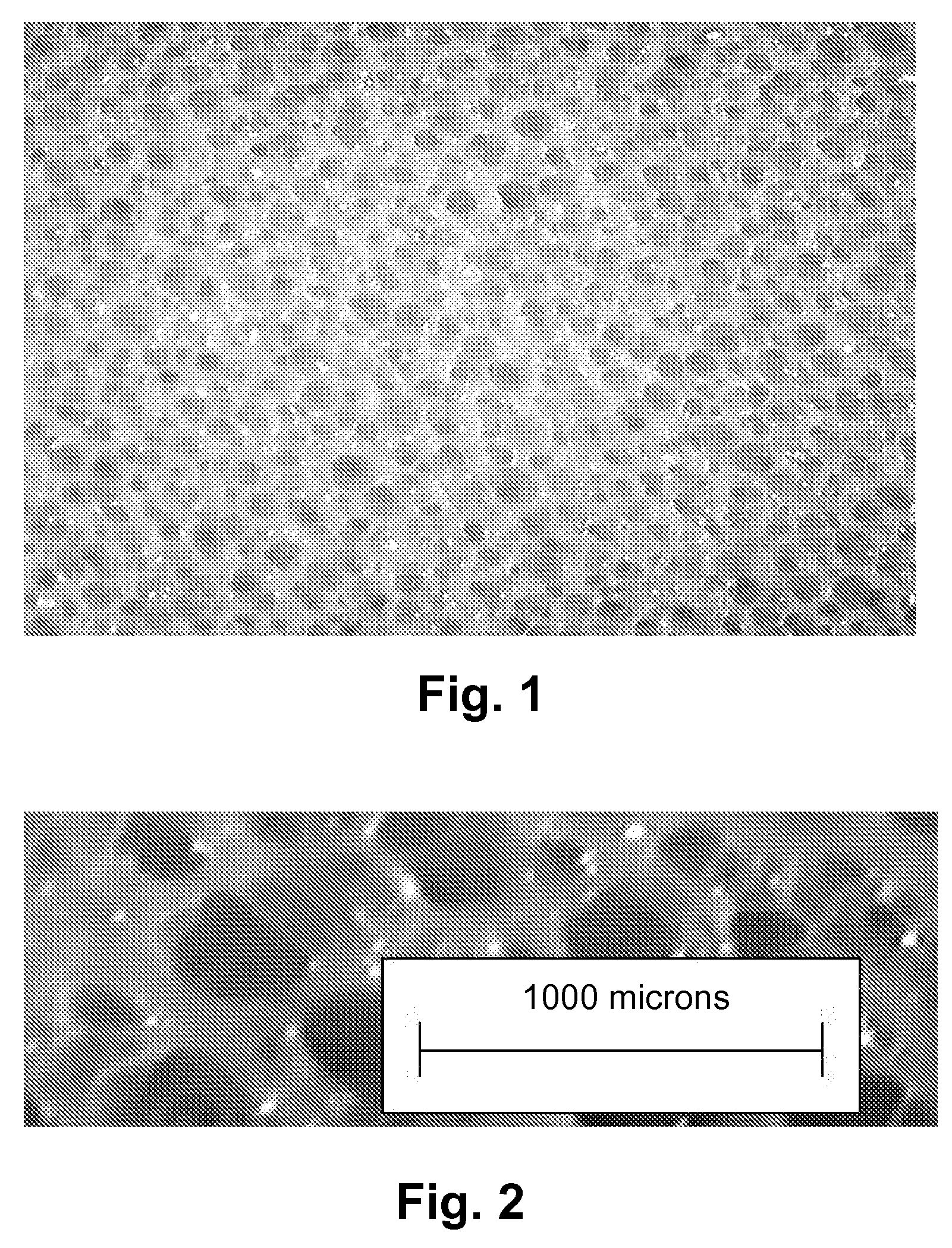Closed cell propylene-ethylene foam
a propylene foam and closed-cell technology, applied in the field of foam materials, can solve the problems of poor elasticity, poor slip resistance, and the compounding of rubber foam materials can become relatively complex, and achieve good anti-skid/traction properties, light weight, and increased thickness of cushioning or padding
- Summary
- Abstract
- Description
- Claims
- Application Information
AI Technical Summary
Benefits of technology
Problems solved by technology
Method used
Image
Examples
examples a-h
[0070]In Examples A-H, the polymer is an ethylene-propylene copolymer having an ethylene content of 16% and a ΔH of 3.5 g / J. The amount of blowing agent was held constant while the amounts of two different peroxide curing agents and a coagent were varied. The propylene based copolymer was blended with all ingredients, but for the blowing agent, for approximately two minutes, then the blowing agent was added and the mix was blended for less than a minute.
[0071]The polymer blend was first compression molded on a cold press to study the cure kinetics and determine an optimum cure temperature and cure time. The polymer blend was then compression molded using the following steps: 90 grams of blend were measured; a mold was preheated to the cure temperature; the polymer blend was placed in the mold; the mold was closed and placed under pressure to prevent any premature release of gas; the mold temperature was maintained for the cure time; and at the end of the cure time, the mold pressure...
examples i-n
[0079]Exemplary foams prepared from different propylene based elastomers and blends of propylene based elastomer and secondary compounds, and the physical properties thereof, are set forth below in Table 4.
[0080]
TABLE 4F*G*IJKLMNMaterial, phrPolymer 110010050808080Polymer 210010050Polymer 320Polymer 420Polymer 520Stearic Acid0.60.60.60.60.60.60.60.6Zinc Oxide22222222Antioxidant0.20.20.20.20.20.20.20.2Blowing Agent2.32.32.32.32.32.32.32.3Peroxide 21.51.51.51.51.51.51.51.5Co-agent 112122222PropertiesFoaming Temp, ° C.170170170170170170170170Cure Time, Minutes10.010.05.05.05.010.010.010.0Length Shrinkage1.21.65.28.32.50.83.72.0Width Shrinkage1.22.56.27.24.41.22.01.6Specific Gravity0.2260.2710.2690.3390.2730.2490.3000.303Hardness6874757976777475100% Modulus, Mpa0.40.50.40.40.40.70.60.6Tear Strength, N / mm6.87.36.68.18.46.87.06.5Compression Set, % (25%,2318192416212817RT, 22 hrs)Compression Set, % (50%,594153464656393550° C., 6 hrs)Xylene Extraction, %3573837675757778Insoluble*data for se...
examples s -
Examples S-W
[0090]Comparisons of the inventive foam were also made to foams comprising styrene block copolymers. Example T is a comparative example of a 100 phr styrene block copolymer foamed material. Examples U, V, and W are blends of Polymer 1 with different amounts and types of styrene block copolymers. Compositions and physical properties of the material after curing and foaming are set forth in Table 6 below.
[0091]
TABLE 6STUVWMaterial, phrPolymer 1100755080Polymer 91002550Polymer 1020Stearic Acid0.60.60.60.60.6Zinc Oxide22222Antioxidant0.20.20.20.20.2Blowing Agent4.84.84.84.84.8Peroxide 222222Co-agent 122222PropertiesFoaming Temp, ° C.160160160160160Cure Time, Minutes2525251520Length Shrinkage3.82.93.84.14.7Width Shrinkage3.53.62.43.93.8Specific Gravity0.1280.1410.1270.1380.144Hardness4465505654100% Modulus, Mpa0.20.60.30.40.3Tear Strength, N / mm2.92.72.93.02.8Compression Set, % (50%, RT, 22 hrs)6173666258Compression Set, % (50%, 50° C., 6 hrs)6292777265Xylene Extraction, % Ins...
PUM
| Property | Measurement | Unit |
|---|---|---|
| closed cell diameter | aaaaa | aaaaa |
| melt temperature | aaaaa | aaaaa |
| diameter | aaaaa | aaaaa |
Abstract
Description
Claims
Application Information
 Login to View More
Login to View More - R&D
- Intellectual Property
- Life Sciences
- Materials
- Tech Scout
- Unparalleled Data Quality
- Higher Quality Content
- 60% Fewer Hallucinations
Browse by: Latest US Patents, China's latest patents, Technical Efficacy Thesaurus, Application Domain, Technology Topic, Popular Technical Reports.
© 2025 PatSnap. All rights reserved.Legal|Privacy policy|Modern Slavery Act Transparency Statement|Sitemap|About US| Contact US: help@patsnap.com


